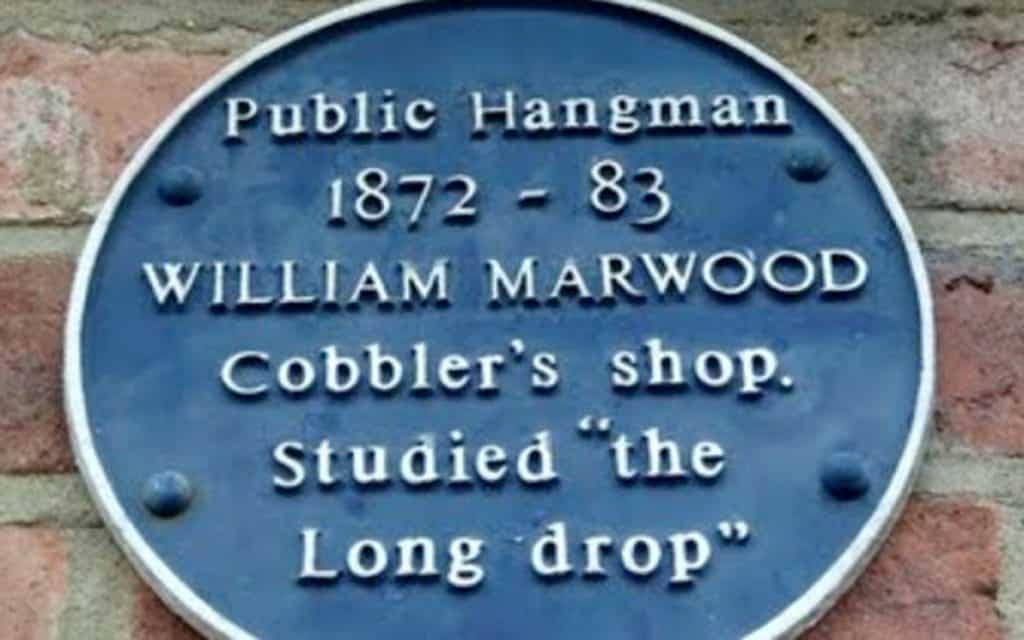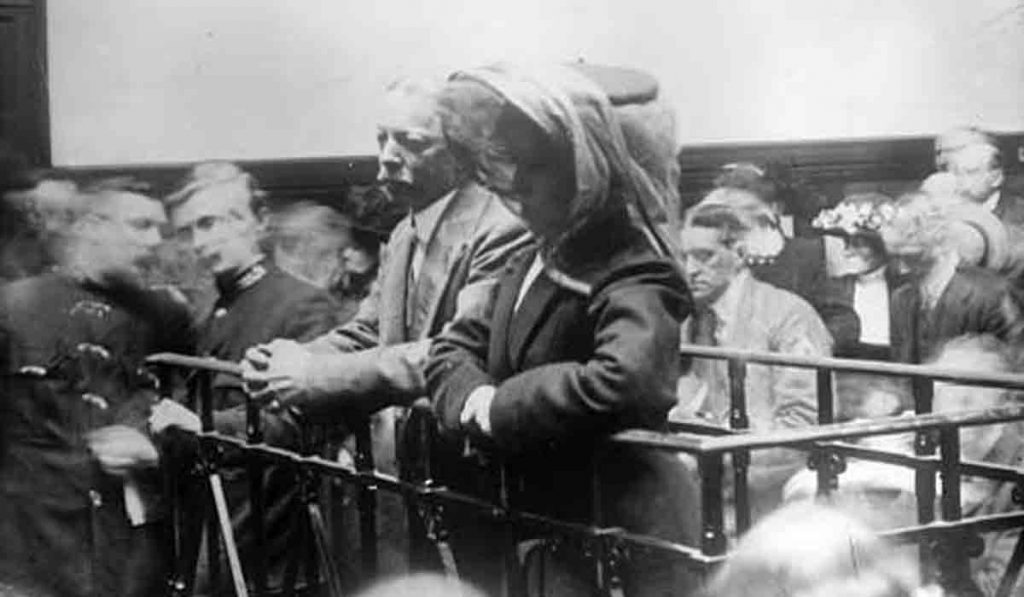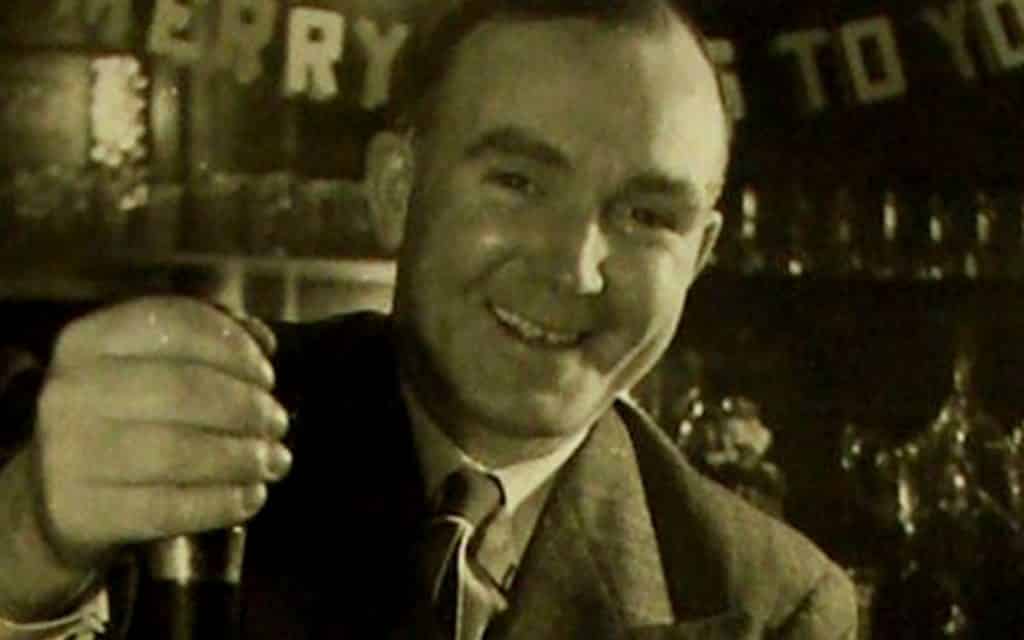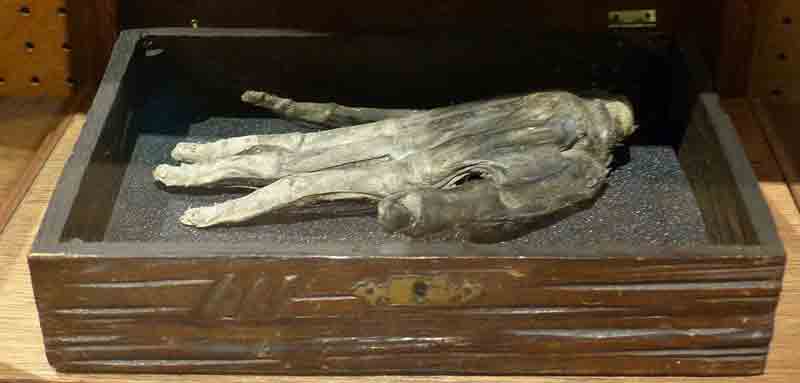Hanging as capital punishment was abolished in England in 1969. CHRISTINE MILLER looks at five hangmen with the most notches on their nooses.

“The death penalty never once acted as a deterrent in all the jobs I carried out. And I have executed more people than anyone this century” – Albert Pierrepoint.
England has quite the history of capital punishment.
In an address to the House of Commons in 1810, the former Solicitor General, Sir Samuel Romilly stated: “There is no country in the face of the earth in which there are so many different offences according to law to be punished with death as in England.” By the 1800s there were 220 offences that could have you meeting your maker thanks to the Crown Judicial system.
Hanging was the preferred method and was performed up until 1964. By 1969 it had been abolished altogether. (It took until 1973 until it was abolished in Northern Ireland.)
Here is your guide to five of England’s most lethal hangmen
William Marwood (1818-1883)
Born in Goulceby in 1818, one of 10 children, William Marwood enjoyed a relatively simple existence up until the age of 54, when he decided he would become a hangman.
Somewhat fond of Methodist preachings, but rather paradoxically fonder of gin, Marwood’s greatest professional achievement was the “long drop” technique – in fact, he was a pioneer in the hangman’s field because of it.
Marwood’s reasoning behind the long drop was that it was a more humane way to dispose of the criminal. In brief terms, the long drop refers to a mathematics-led system which takes into account the offenders weight, height and muscle build to determine the adequate length of rope needed to swiftly dispatch the individual.
Prior to this method being introduced executions had been known to be all the more distressing to all involved, to say the least – too long a rope and the convicted could be decapitated; too short a rope and he or she would suffocate very slowly, sometimes taking up to 45 minutes to die.

By using the long drop and re-positioning the noose’s knot under the convict’s left ear, death would not be instantaneous – although unconsciousness would be. Death would follow within two minutes.
Rather proud of his career path and achievements, Marwood did not like to be known as a hangman: “I prefer to be called an executioner,” he famously claimed.
This executioner was successful in ending some 176 convicts throughout his career.
One of the most notable of this number is Maoira Seoighr, who along with a number of other men, was found guilty of the murder of five family members in Galway, Ireland.
Up until the lever was pulled that opened the trap doors lying beneath Seoighr’s trembling feet, he was loudly protesting his innocence. The rope was somehow able to shift its position on Seoighr’s neck meaning he did not die instantly, in fact he struggled for a matter of minutes before it was confirmed that he was, mercifully, dead.
In 2018, Irish President Michael D. Higgins posthumously issued a pardon to Seoighr, who’s final protests of innocence had indeed been his truth.
Another famous criminal that Marwood executed was Selina Wadge; a young, underclass Victorian, and a single-mother of two disabled children.
She was found guilty of the murder of the youngest of her boys, Harry.
Hers would be the first private execution at Bodmin Jail and also the first to employ Marwood’s long drop.
Selina’s last words were: ‘Lord deliver me from this miserable world.’ Her body was left hanging for an hour, her white handkerchief she had clung still in hand.
Discussing his career choice and impact in later life, Marwood stated: – “Where there is guilt there is bad sleeping, but I am conscious that I try to live a blameless life. Detesting idleness, I pass my vacant time in business and work in my shoe-shop near the church day after day until such time as I am required elsewhere.”
“It would have been better for those I executed if they had preferred industry to idleness.”
Henry Pierrepoint (1877-1922)
Born in 1877, in Nottinghamshire, he first worked in a mill and then as an apprentice butcher, before one day reading an article in a local newspaper about the skill of the hangman. Henry soon decided he wanted a piece of the action and in 1901 he got the job.
Initially acting as Assistant Executioner, by 1905 Henry was flying solo. He even persuaded his brother Thomas to enlist as a hangman, which he did to great success, and he is talked about in more detail below.
Feared but respected, yet somewhat made an outcast from society, Henry was a hangman for a total of nine years, until his career was quickly pulled from under him when he turned up to a hanging smelling of alcohol.
Speaking of the perks of the job, he somewhat bizarrely declared: “Perhaps the notion of seeing so many different towns had something to do with my desire, for I was very fond of travel.”
Henry carried out a total of 105 executions in his career.
He died in 1922 at the age of just 44.
Thomas Pierrepoint (1870-1954)
Brother of Henry, Thomas Pierrepoint was a hangman for almost 40 years. He carried out almost 300 hangings in his career with the first hanging he participated in was alongside his brother in 1906.
During the Second World War, Pierrepoint was appointed as hangman by the American military and executed a total of 13 US soldiers in Somerset, his nephew, Albert, who is discussed below was acting as Assistant Executioner to six of these.
Among those he executed was the the infamous poisoner Frederick Seddon in 1912.
An official report suggests that Pierrepoint had smelt as if he had ingested an amount of alcohol, but Thomas’s early advice to Albert (to never accept a drink on the job) would suggest that this might be false, alongside the fact that his brother had ceased employment due to intoxication on the job, and that officials also took no further action over these supposed findings.
He never officially retired, although he stopped receiving offers of work. He died aged 83 in Bradford, England.
John Ellis (1874-1932)
Born in Rochdale in 1874, John Ellis hanged 203 people throughout his career.
As well as the execution it the infamous murderer Dr Crippen, another of Ellis’s most famous cases was that of Edith Thompson. It was possible that Thompson was pregnant at the time of her death, which would make the hanging illegal.
They hanged her regardless.
28 year-old Thompson was presented to the gallows almost unconscious due to sedatives having to be given to her, such was her terror at the prospect of what would lie ahead of her. As she was hanged, Thompson suffered a haemorrhage which added to the suspicion that she might have been pregnant at the time of her death, but no post-mortem was forthcoming.
Ellis has always strongly believed that Thompson would be reprieved. Her hanging would deeply affect hime, and he retired the following year.
He quickly began to unravel.

Not long after his retirement in 1924, having become heavily intoxicated, he decided to attempt to shoot himself. His attempt failed and he soon found him on trial for his attempted suicide. Apologising to the judge at Rochdale Magistrates Court, Ellis promised to never turn a gun on himself again.
He was true to his word. He would use a razor blade in his next (successful) suicide attempt.
With his drinking rapidly worsening, it culminated in him threatening his wife and children with a razor blade, telling them he would cut their heads off. They wisely fled the house.
Ellis did not pursue them. Instead he drew the blade to his throat and bled to death on the pavement outside his house. He was just 57.
On the life of a hangman, Ellis had once stated- ‘Socially it’s a bad business being a hangman.’
It would seem for him, it was.
Albert Pierrepoint (1905-1992)

Albert Pierrepoint is undoubtedly England’s most famous hangman. He was born in Clayton, England in 1905, his father being the aforementioned Henry Pierrepoint, but it was his uncle Thomas whom he greatly idolised. His uncle would allow the young Pierrepoint to read his diaries detailing the executions he carried out.
Once describing his job as “hereditary”, it would seem Pierrepoint was always destined to follow in his father’s and uncle’s footsteps. In school he even once wrote a piece entitled “When I Grow Up I Would Like To Be An Official Executioner”.
As an adult, he wrote to the Home Office in 1931 and here a career which would span 25 years and consist of 600 hangings was born.
His very first job was in Ireland, as an assistant to uncle Thomas. Ten years after his first hanging, he would become primary hangman.
One of Pierrepoint’s more notable hangings was that of German Spy Karl Richter in 1941, who was determined to give Pierrepoint as much difficulty in executing him as possible.
When Pierrepoint entered the cell, Richter charged head first into the cell wall. A struggle ensued, but Pierrepoint did successfully manage to bind Richter hands, only for Richter to use almost inhuman force and snap the leather snaps into two. It took four guards and Pierrepoint to bundle the convict into the gallows where his hand and feet were restrained, a black hood placed over his head, and the noose put in place.
Continuing to struggle, Richter was flaying so much that he almost give himself a very difficult death indeed. Just as Pierrepoint pulled the lever which opened the trapdoors beneath Richter, Richter jumped into the air causing the noose to rise up and catch on his nose. If the rope had not been the exact length that it was, Richter would not have died instantly due to having jumped.
The entire procedure, from cell to, well, dead, usually took only 15 seconds. In Ritcher’s case, it took 17 minutes.
Some of Pierrepoint’s other most notable executions include the last woman to be hanged in England, Ruth Ellis; ’The Rillington Place Strangler”, John Christie; and “The Acid Bath Murderer”, John Haigh.
Pierrepoint would claim in his 1977 memoir that the act of hanging was “sacred to me”, although this was not to be his only career choice. As well as being a hangman for 25 years, he was also a pub landlord throughout some of these years. and coincided both careers successfully.
In an interview years later, Pierrepoint rather bluntly stated that his life’s work may not have served as any form of deterrent, but merely state vengeance: “I have come to the conclusion that executions solve nothing, and are only an antiquated relic of a primitive desire for revenge which takes the easy way and hands over the responsibility for revenge to other people.”
In 2005, Pierrepoint: The Last Hangman was released, starring Timothy Spall as Albert Pierrpoint.







